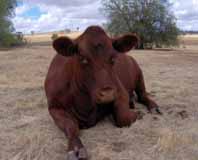Read the latest information on
Foot-and-mouth disease
 Animal Health Australia (AHA) has now commenced the evaluation of the Australian Johne’s Disease Market Assurance Program for Cattle (CattleMAP) – a key step in the implementation of the recently released BJD Framework.
Animal Health Australia (AHA) has now commenced the evaluation of the Australian Johne’s Disease Market Assurance Program for Cattle (CattleMAP) – a key step in the implementation of the recently released BJD Framework.
During this evaluation period it has been agreed that the testing requirement for CattleMAP will be suspended until 1 November 2016.
“The review will take place over the coming months and involves consultation with a number of producers still in the CattleMAP, as well as some who have recently left. Identified producers will have the opportunity to state what they feel has worked well within the CattleMAP and what areas need improvement,” said AHA’s Executive Manager of Biosecurity Services Duncan Rowland.
“Although suspension of testing is in place, it’s imperative that producers continue to maintain their biosecurity plans and undergo veterinary reviews during this evaluation process – robust biosecurity practices are vital in this new deregulated environment,” said Mr Rowland.
Cattle producers can access a range of resources to help them with their biosecurity planning and implementation by visiting the Cattle page of the Farm Biosecurity website. These tools can assist producers manage the transition away from regulated control of an individual disease towards the broader on-farm risk-based approach to biosecurity that is currently occurring with BJD.
The BJD Steering Committee will implement the recommendations identified by the review, at the conclusion of the CattleMAP evaluation period.
Additional steps still to take place in the BJD Framework implementation process include:
As with all the changes stemming from the implementation of the new national BJD Framework, AHA will continue to update and inform Australian producers throughout the reform process.